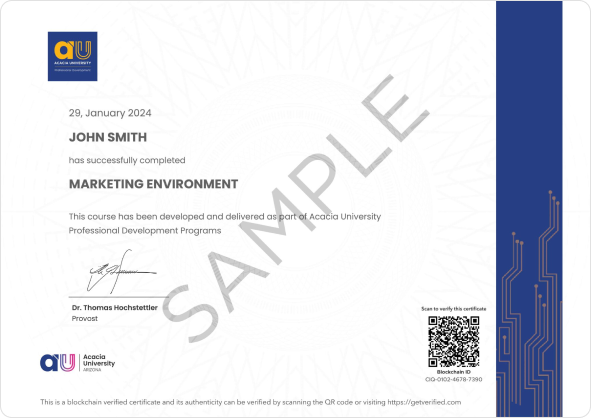
Advanced Program in Data Visualization

Elevate your career with our comprehensive 6-month Advanced Program in Data Science, certified by Acacia University. This professional development program equips you with in-demand skills in Python programming, data analytics, machine learning, and AI implementation through 80 hours of live instructor-led training.

- Duration
6 Months
- Modules
5 Modules
- Assignments
4 Assignments
- Format
Online Learning
- Projects
3 Projects
- Level
Intermediate
Globally Recognized & Accredited:





Students Trained Globally
Industry-Aligned Programs
Countries with Active Alumni
Career Transition Success
- Industry-Standard Technology Stack
Tools & Technologies That Power Success
Master the complete data science ecosystem with hands-on experience using industry-leading tools and frameworks. Our Advanced Program in Data Science equips you with practical skills in Python programming, data manipulation, visualization, and machine learning – preparing you for real-world data challenges.
- Production-Ready Skills
- Industry-Relevant Tools
- Hands-On Learning
Python

MySQL

Anaconda

Jupyter Hub
Pandas
NumPy
Seaborn
Matplotlib
Excel
GIT
HTML

CSS
- Industry-Standard Technology Stack
Tools & Technologies That Power Success
Master the complete data science ecosystem with hands-on experience using industry-leading tools and frameworks. Our Advanced Program in Data Science equips you with practical skills in Python programming, data manipulation, visualization, and machine learning – preparing you for real-world data challenges.
- Production-Ready Skills
- Industry-Relevant Tools
- Hands-On Learning
Python

MySQL

Anaconda

Jupyter Hub
Pandas
NumPy
Seaborn
Matplotlib
Excel
GIT
HTML

CSS
Acacia University Professional Development

Eligibility
Prerequisites
Course Modules
Mastering the Fundamentals of Python
Learn the core structure and functionality of Python—covering syntax, variables, data types, conditionals, loops, and functions. This module sets the foundation for data-centric programming and analysis.
Working with Python Libraries
Dive into essential Python libraries used in data science. Understand how to manipulate arrays using NumPy, handle dataframes with Pandas, and create visualizations with Matplotlib.
Preparing for Data Analytics and Machine Learning
Acquire the programming confidence needed for more advanced analytics modules. Build a strong base in Python that enables you to transition smoothly into data science, machine learning, and AI.


Learning Outcomes
By completing this module, you will:
- Learn the core structure and flow of Python programming
- Understand how to write and organize Python programs with conditional statements and functions
- Gain practical knowledge of key Python libraries like NumPy, Pandas, and Matplotlib
- Build a strong Python foundation for progressing into advanced analytics, ML, and data manipulation
Mathematical Foundations for Data Analysis
Gain a solid grasp of linear algebra, probability, and statistics—core areas essential for handling data and performing precise analysis. Understand distributions, averages, variance, and the fundamentals of statistical thinking.
Practical Tools and Data Handling
Explore tools like CSV and Excel for managing datasets, and apply statistical tools to clean and prepare raw data. Learn to manipulate, reshape, and process data efficiently using popular libraries such as NumPy and Pandas.
From Messy Data to Meaningful Insights
Learn the methods to identify and fix missing values, duplicates, and incorrectly formatted data. This module lays the groundwork for accurate analytics by teaching the principles of data treatment before modeling.


Learning Outcomes
By completing this module, you will:
- Master the essentials of probability, statistics, and linear algebra in the context of data science
- Understand and apply basic statistical tools for working with structured and unstructured data
- Learn to clean, import, and explore data using CSV, Excel, and Python libraries like NumPy and Pandas
- Fix incorrect, corrupted, duplicate, or incomplete data using standard preprocessing techniques
- Prepare data for machine learning models through statistical analysis and visualization
Foundations of Data Representation
Begin your journey with an introduction to data visualization and understand how visual context helps interpret large datasets effectively. Learn how different types of charts—bar, pie, line, scatter, heatmaps, and more—are used to represent diverse data types and uncover insights.
Hands-on SQL and Database Skills
Explore the role of SQL in querying, managing, and organizing structured data. Learn about relational databases, table structures, and key SQL commands such as SELECT, JOIN, GROUP BY, and more. Understand how databases form the backbone of modern data systems.
From Raw Data to Actionable Insights
Develop the ability to convert unstructured and structured data into meaningful visual reports and dashboards. Work with tools and techniques that help in structuring and analyzing data for business decision-making.


Learning Outcomes
By completing this module, you will:
- Understand the core concepts of data visualization and how different chart types are used
- Learn the fundamentals of SQL and relational databases for managing structured datasets
- Apply SQL commands to query, manipulate, and retrieve data efficiently
- Gain hands-on experience in transforming raw data into insightful visual representations
- Build complete data analysis projects that drive meaningful business decisions
- Develop the mindset and adaptability needed to keep pace with evolving data tools and techniques
Mastering Power BI Interface & Views
Gain proficiency in Power BI’s core interfaces—Data View, Model View, and Report View. Learn how to work across these views to manage data models, design visuals, and craft dynamic reports.
Transforming and Filtering Data Effectively
Understand how to use Power Query Editor to clean, shape, and transform raw data before analysis. Apply essential filtering techniques to control how data is displayed across various visuals and geographical layers.
Creating Impactful Reports & Visual Hierarchies
Learn to build and customize visuals, manage hierarchies, and implement drill-down features for interactive reports. Utilize Power BI’s tools to sort and organize data for clear, actionable insights.


Learning Outcomes
By completing this module, you will:
- Understand the functionality of Power BI’s Data, Model, and Report Views
- Format a wide range of visualizations and create drill-down reports using hierarchies
- Perform data transformation and preparation using Power Query Editor
- Apply sorting, filtering, and interactivity to enhance visual storytelling
- Control how filters impact visuals within your reports, including location-based filtering
- Gain hands-on experience with Excel tools integrated into the Power BI environment
Your Success Story Starts Here
Every image here tells a story of transformation, dedication, and success. Be the next to wear the cap and gown. Enroll today, and let your journey begin.
What Our Students Say
Every student has a story—of ambition, of challenge, of growth. In their own words, they share how Airtics became a turning point in their learning journey and helped them move closer to their goals.
Pemsith Ravi

- Verified Review
Zeeshan Ali

Airtics offers a truly transformative learning experience. The course content is up-to-date, the mentors are incredibly supportive, and the flexibility of the online platform made it easy to balance with my work. Highly recommended for anyone looking to upskill!
- Verified Review
Aalaa Shbair

The experience at Airtics College has been tremendous for me. It has illuminated my path and opened the way for me to become a developer of solutions in my workplace. I cherish every moment of this online learning experience and the supportive community of instructors and peers.
- Verified Review
Muhammad Fatouh

Airtics offered a great platform that allowed me to take a meaningful step forward in data science while balancing my demanding job as a telecom engineer. If you have a busy schedule and struggle with work-life balance, I encourage you to find a flexible platform like Airtics to pursue your goals.
- Verified Review
Al Tayyab Bakhsh

Coming from a non-technical background in marketing, switching to data science was challenging. The faculty at Airtics was incredibly helpful, especially my mentor Miss Piyali, who guided me with patience every step of the way. Their mentorship gave me the confidence to succeed.
- Verified Review
Dilnawaz Qureshi

Airtics provides an impressive curriculum for Python Full Stack development that is both well-structured and up-to-date. This comprehensive approach ensures we acquire a thorough understanding of the field and are well-prepared for real-world challenges.
- Verified Review
Charuhaas Shenoy

- Verified Review
Madonna Ghanem

- Verified Review
Dhruv Narse

Airtics provides a conducive learning environment for data analytics students. They have experienced faculty, and provide access to the latest software and tools used in the industry. This ensures that we are well-prepared for our future careers in the field.
- Verified Review
Real-World Capstone Projects
Apply your data science skills to solve real business challenges through hands-on projects. Choose from our curated capstone projects or bring your own organizational problem to create a portfolio that showcases your expertise to future employers.
House Rental Predication
Image Classification
Business Insights Reporting
Learn from Industry Leaders & Experts
Learn from the best in the field. Our faculty combines academic brilliance with industry expertise, featuring PhD holders, senior data scientists, and AI researchers from top organizations.
Global Student Community
Students from 60+ Countries Worldwide









Frequently Asked Questions
Basic knowledge of programming logic and technology exposure will be helpful.
Automated transport, taking over dangerous jobs, robots working with humans, improved elderly care, cyborg (organic/bio-mechanic) organisms, environment monitoring and response to climate change goals.
Yes. The average base pay for a machine learning engineer in the US is $123,608, as of April 2022. According to a December 2020 study by Burning Glass, demand for AI and machine learning skills is projected to grow by 71 per cent over the next five years. The same study reports a $14,175 salary premium associated with these skills.
Still have questions?
If you have any other questions or need further information about our Advanced Program in Data Science, don’t hesitate to contact us. Our admissions team is here to help you take the next step in your data science career.


















